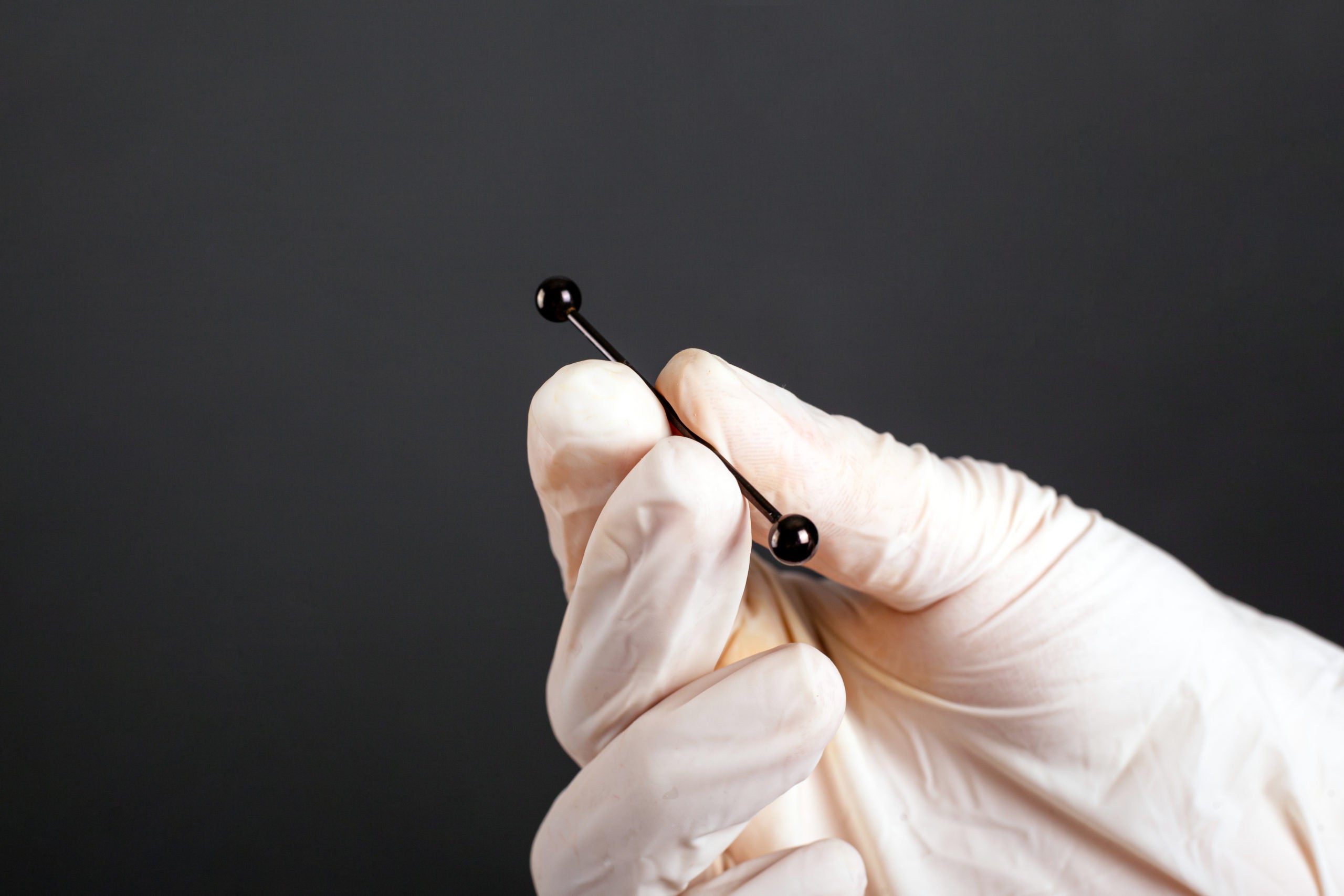Could Your Migraines be Triggered by Light Sensitivity?
According to several studies, the short answer of whether your migraine attacks could be triggered by light sensitivity is yes. In fact, even blind people with no light perception at all may be suffering from light-triggered migraines, even though they can’t see that light. Fortunately, specialty tinted lenses have been proven effective in blocking offending light to reduce migraine frequency.
Yes, You Are More Sensitive to Light
If you suffer from migraines, you may be keenly aware that you’re more sensitive to bright lights and loud noises than most other people, and science backs up that belief. In fact, it has long been known that migraine sufferers are more likely to experience light and sound sensitivity. For them, this sensitivity is in play even during times when they are headache-free.
In a 1997 study, U.K. researchers compared the responses of 52 migraine sufferers and 48 non-migraine-sufferers while being exposed to increasing levels of light and sound. They found that the migraine patients had significantly lower tolerance for both light and sound than those who don’t experience migraines. Researchers also discovered that this sensitivity tends to increase with age.
Source: Main A, Dowson A, Gross M. Photophobia and phonophobia in migraineurs between attacks. Headache. 1997. 37:492-5. www.ncbi.nlm.nih.gov/pubmed/9329231
Why You May Not Know You’re Light Sensitive
One study from Baylor College of Medicine reveals that light sensitivity (or photophobia) is a major trigger for migraines in many people, but may often go undiagnosed.
But how does this happen? Researchers believe that many patients aren’t actually aware of increased light sensitivity during their migraine episodes. In this study, 85 patients with migraine or probable migraine were asked about light sensitivity. 24 percent of them initially answered that they were not light-sensitive during headaches.
However, after being asked more detailed questions, 93 percent of these sufferers reported that they actually did experience increased light sensitivity. According to researchers, this study highlights the need for more detailed questioning to ensure proper diagnosis — and therefore treatment — of light sensitivity.
Source: Evans RW, Seifert T, Kailasam J, Mathew NT. The use of questions to determine the presence of photophobia and phonophobia during migraine. Headache 2008;48:395-7. www.ncbi.nlm.nih.gov/pubmed/17868350
Light Sensitivity Plays a Role in Migraines – Even in the Blind
Even in blind migraine sufferers, research has revealed that the optic nerve plays a major role in transmitting signals that trigger pain. One study of 20 subjects found that 6 blind migraine sufferers without any light perception at all (due to optic nerve damage or removal) were also unaffected by light during their migraines.
This suggests that it’s the retina — not necessarily the optic nerve — that plays a role in migraines, even in eyes that cannot see. Of the 20 participants, the remaining 14 were able to detect bright lights directed at their faces. These patients had significant reactions when light was shone on them during migraine attacks.
Another study from the University of Utah School of Medicine supports the concept that light in fact triggers specific neural pathways that are unrelated to vision. This study was focused on a 68-year-old patient who had been blind for 20 years due to a benign tumor. Although blind, this patient was found to suffer from headaches triggered by light. The researchers hypothesized the patient’s reaction was due to hyperexcitability of the trigeminal nerve, the primary sensory nerve of the head. In other studies, this nerve has been associated with light sensitivity and migraines, though it has nothing to do with sight.
Source: Noseda R, Kainz V, Jakubowski M, Gooley JJ, Saper CB, Digre K, Burstein R. A neural mechanism for exacerbation of headache by light. Nat Neurosci. 2010. 13:239-45. www.ncbi.nlm.nih.gov/pubmed/20062053

Source: Amini A, Digre K, Couldwell WT. Photophobia in a blind patient: An alternate visual pathway. Case report. J Neurosurg. 2006. 105:765-8. www.ncbi.nlm.nih.gov/pubmed/17121141
Tinted Lenses Shown to Provide Relief
Fortunately for migraine sufferers, University of Utah Health Science researchers Dr. Bradley Katz and Dr. Kathleen Digre found that migraine patients are not sensitive to all light wavelengths — just some of them.
Their study discovered that specially-tinted lenses are effective in filtering out the offending types of light, alleviating migraine pain and frequency. These lenses, which have a rose hue, are called FL-41 lenses and have also been shown to be effective in treating overall light sensitivity in patients with photophobia.
Source: Katz B, Digre K. Diagnosis, Pathophysiology and Treatment of Photophobia. Survey of Ophthalmology. 2016.02.001 www.surveyophthalmol.com/article/S0039-6257(15)30007-2/abstract

Moreover, a study out of the U.K. indicates that an FL-41 lens with a rose-brown hue helped reduce the frequency, duration and intensity of migraines in children. In this study, both rose-tinted and blue-tinted lenses were evaluated over a four-month period in a group of 20 children clinically diagnosed with migraines. After just one month of wear, these children reported a reduced headache frequency with both types of lenses.
However, kids who wore the rose-tinted lenses continued to experience reduced migraines for the entire four-month study, whereas the blue-tinted lens wearers did not. At the end of four months, the migraine frequency in children wearing rose-tinted lenses had dropped from 6.2 per month to 1.6 per month.
Source: Good PA, Taylor RH, Mortimer MJ. The use of tinted glasses in childhood migraine. Headache. 1991. 31:533-6. http://www.ncbi.nlm.nih.gov/pubmed/1960058
But Are Rose-Tinted Lenses Your Best Option?
As you can see from the above studies, tinted lenses have been shown to be helpful in filtering offending light and reducing light-triggered migraines. However, the color doesn’t matter as much as the wavelengths the lenses block.
Researchers at the University of Utah Health Sciences Center found that that the FL-41 lens was better than rose-tinted or grey lenses when it comes to decreasing the effects of light sensitivity.
In the first study, 86 patients wore FL-41 lenses, rose-tinted lenses, and gray-tinted lenses. This group included 56 patients with light sensitivity (a specific light sensitivity called BEB), along with 30 subjects without light sensitivity. At the end of the study, researchers found the FL-41 lenses reduced both blink rate and eyelid spasms in the light sensitivity group. FL-41 lenses also provided superior improvement in light sensitivity and reading compared to the other lenses.
The second study of FL-41 lenses indicated that they reduce the symptoms of photosensitivity in patients with a wide array of light hypersensitivity, including those sensitive to fluorescent light.
Source: Blackburn MA, Lamb R, Digre KB et al. FL-41 Tint Improves Blink Frequency, Light Sensitivity, and Functional Limitations in Patients with Benign Essential Blepharospasm. Ophthalmology. 2009. 116:997-1001, http://www.ncbi.nlm.nih.gov/pubmed/19410958
Source: Wilkins AJ, Wilkinson P. A tint to reduce eye-strain from fluorescent lighting? Preliminary observations. Ophthalmology and Physiological Optics. 1991. 11:172-175. http://www.ncbi.nlm.nih.gov/pubmed/2062542
The Confusion Around FL-41
As the term FL-41 became more common and more people learned about it, it became a generic term without a concrete definition. Over the years, the FL-41 has been tacked onto many different types of lenses — some of which are ineffective in helping those with light sensitivity or migraine.
An early project at the University of Utah compared many different generic Fl-41 lenses. Their light transmissions and color vary greatly. Some are red, rust, purple, rose, orange, green, and so on.

A New Lens Emerges
Due to confusion around the name and differences of FL-41 lenses, Axon Optics launched in 2011 to create a lens for people with photosensitivity. They developed a lens that is consistent, has a light tint, and has a pleasing color that is easy on the eyes.

To counteract the effects of light sensitivity when it comes to migraine headaches, sufferers may want to consider these lenses from Axon Optics that block the most commonly-offending types of light. Shop for them here.





